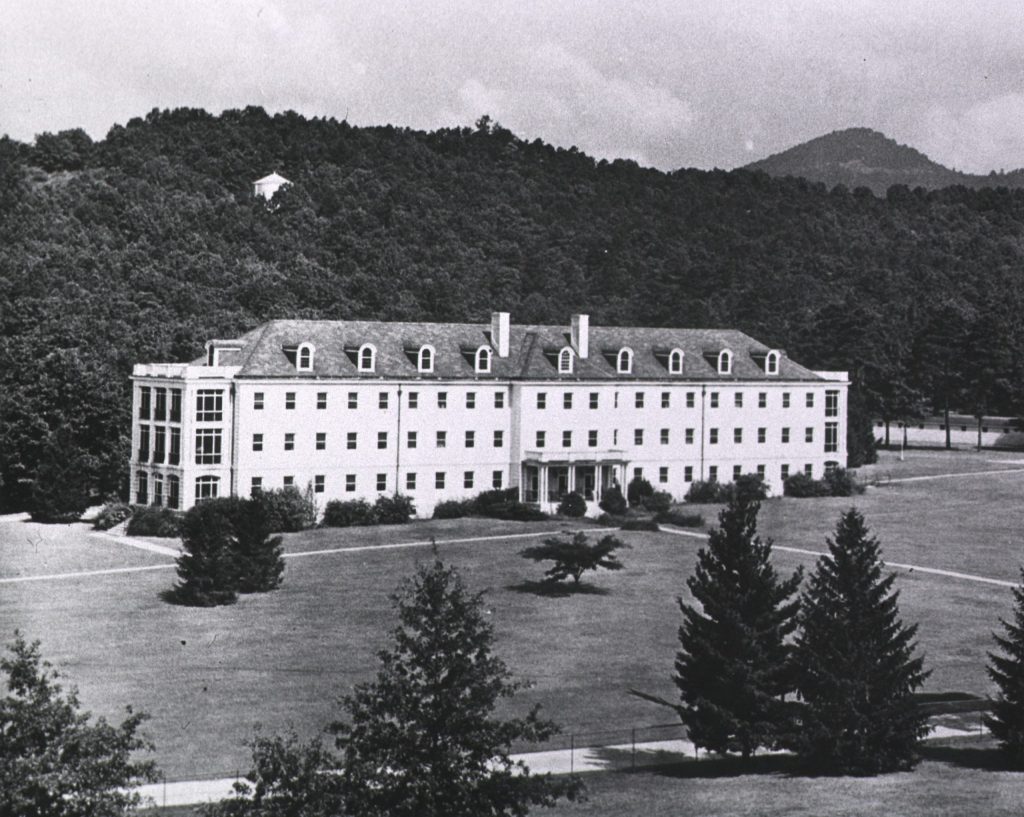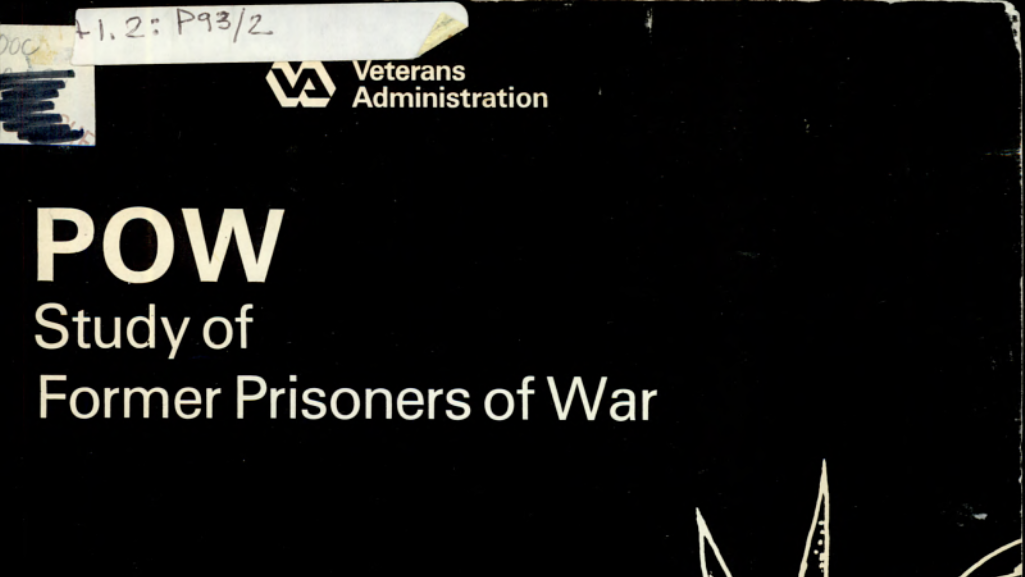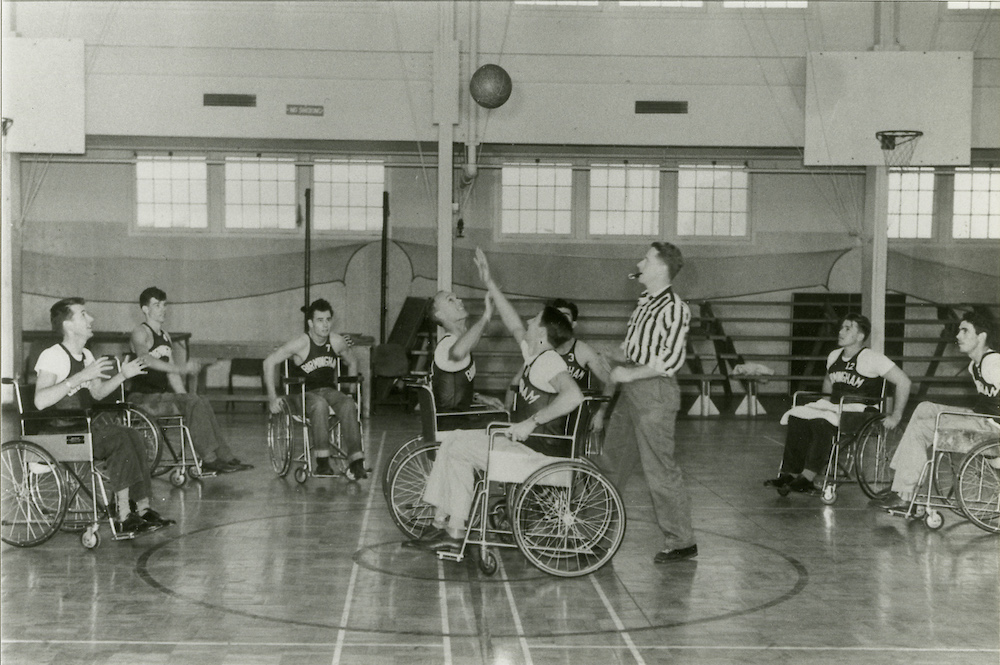
After the United States entered World War I in 1917, the government hastily built new facilities both to train Army medical personnel and to provide care for soldiers wounded during the fighting or stricken with disease. The War Department set up many hospitals during and immediately after the war expressly for the purposes of treating service members with tuberculosis, which was the third leading cause of death among Americans during this period. The military completed its largest tuberculosis hospital at Oteen, North Carolina, near the city of Asheville at the foothills of the Smokey Mountains, in early 1919. Asheville at that time was a popular destination among tuberculosis sufferers, who sojourned there to enjoy the restorative benefits of the clean mountain air. In 1920, the Army handed over most of its medical facilities, Oteen included, to the Public Health Service (PHS). Two years later, PHS transferred Oteen and the other hospitals in its system that specialized in Veteran care to the newly established Veterans’ Bureau.
In its first two years of operation under the Army and PHS, Oteen admitted over 5,000 patients. The sprawling, 346-acre campus included forty-six tuberculosis wards to house men undergoing treatment. Oteen quickly established itself as the nation’s top treatment center for soldiers and Veterans with tubercular or other respiratory ailments. It also led the way in the development and teaching of tuberculosis protocols. In the early 1920s, the hospital hosted several training programs for doctors and nurses interested in learning the latest diagnosis and treatment methods for patients suffering from the disease. Throughout the decade and into the next, the Veterans’ Bureau made major investments in the infrastructure at Oteen, replacing the wood-frame tuberculosis wards and other structures with larger, more durable buildings of concrete and steel. The centerpiece of this new construction was the stately, four-story Administration building, completed in 1928 at a cost of $750,000, which contained laboratories, operating rooms, and additional bed space. Oteen’s growth continued after the Veterans’ Administration replaced the Veterans’ Bureau in 1930. In 1932, the facility added four new hospitals wards, a dining hall, and two nurse dormitories for training rotations.

In addition to providing medical care, the hospital in its initial years included a Reconstruction Department dedicated to the rehabilitation of the infirm. The physical and occupational therapy programs offered at Oteen aimed to return men to military service. If that was not possible, they focused on helping patients adapt to their disabilities and learn new skills. Very few of the Reconstruction Aides were trained therapists; instead, they were artists, crafts persons, and teachers. At Oteen, they taught basic education classes like reading and writing, but also printing, painting, silversmithing, weaving, and even beekeeping. These activities were designed to improve dexterity, mental resilience, and morale while also preparing disabled soldiers and Veterans for their return to civilian life.
In 1967, a new hospital, now known as the Charles George VA Medical Center, took the place of the medical complex on the original Oteen campus, although some of the older buildings remained in use. Its days as one of the premier tuberculosis hospitals have long passed, thanks to advances in the detection, control, and treatment of the disease that have reduced tuberculosis case rates in the United States to among the lowest in the world. An important legacy of its early years lives on, however, as the medical center continues to serve as a focal point for the training and education of doctors, through its academic partnerships with area medical schools.
By Heather South, Lead Archivist, North Carolina Western Regional Archives and Rodney Doty, Visual Information Specialist, Charles George VA Medical Center
Share this story
Related Stories
History of VA in 100 Objects
American prisoners of war from World War II, Korea, and Vietnam faced starvation, torture, forced labor, and other abuses at the hands of their captors. For those that returned home, their experiences in captivity often had long-lasting impacts on their physical and mental health. Over the decades, the U.S. government sought to address their specific needs through legislation conferring special benefits on former prisoners of war.
In 1978, five years after the United States withdrew the last of its combat troops from South Vietnam, Congress mandated VA carry out a thorough study of the disability and medical needs of former prisoners of war. In consultation with the Secretary of Defense, VA completed the study in 14 months and published its findings in early 1980. Like previous investigations in the 1950s, the study confirmed that former prisoners of war had higher rates of service-connected disabilities.
History of VA in 100 Objects
In the waning days of World War I, French sailors from three visiting allied warships marched through New York in a Liberty Loan Parade. The timing was unfortunate as the second wave of the influenza pandemic was spreading in the U.S. By January, 25 of French sailors died from the virus.
These men were later buried at the Cypress Hills National Cemetery and later a 12-foot granite cross monument, the French Cross, was dedicated in 1920 on Armistice Day. This event later influenced changes to burial laws that opened up availability of allied service members and U.S. citizens who served in foreign armies in the war against Germany and Austrian empires.
History of VA in 100 Objects
Basketball is one of the most popular sports in the nation. However, for paraplegic Veterans after World War II it was impossible with the current equipment and wheelchairs at the time. While VA offered these Veterans a healthy dose of physical and occupational therapy as well as vocational training, patients craved something more. They wanted to return to the sports, like basketball, that they had grown up playing. Their wheelchairs, which were incredibly bulky and commonly weighed over 100 pounds limited play.
However, the revolutionary wheelchair design created in the late 1930s solved that problem. Their chairs featured lightweight aircraft tubing, rear wheels that were easy to propel, and front casters for pivoting. Weighing in at around 45 pounds, the sleek wheelchairs were ideal for sports, especially basketball with its smooth and flat playing surface. The mobility of paraplegic Veterans drastically increased as they mastered the use of the chair, and they soon began to roll themselves into VA hospital gyms to shoot baskets and play pickup games.






